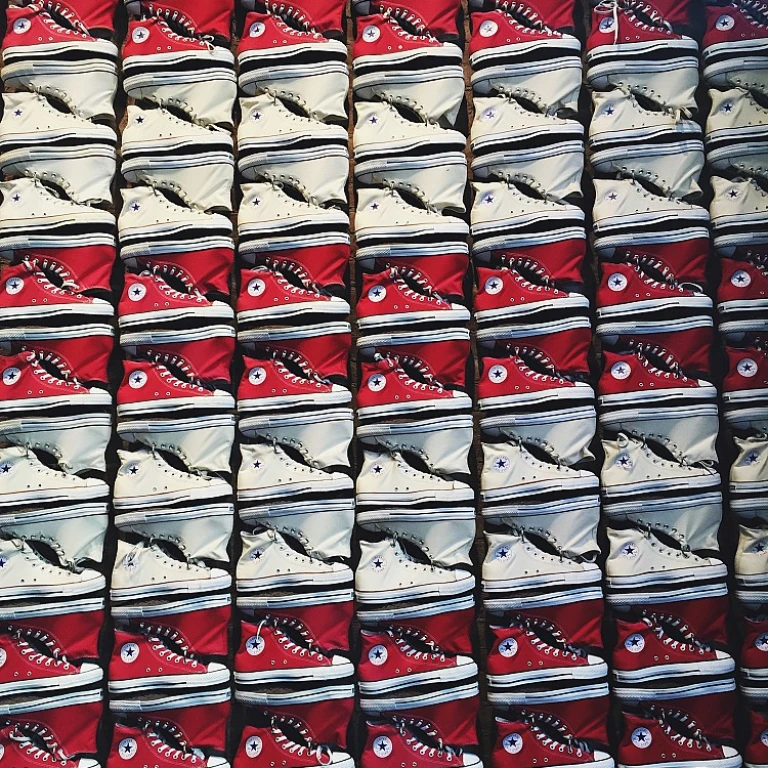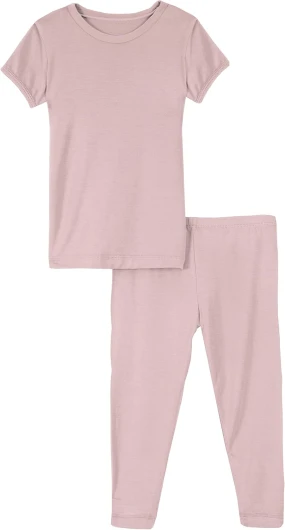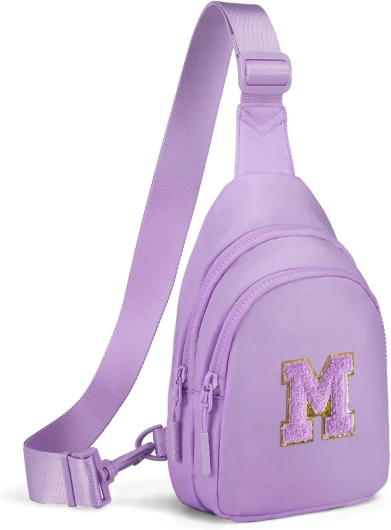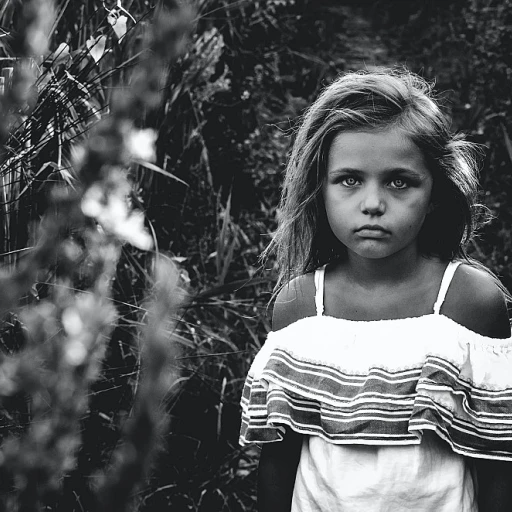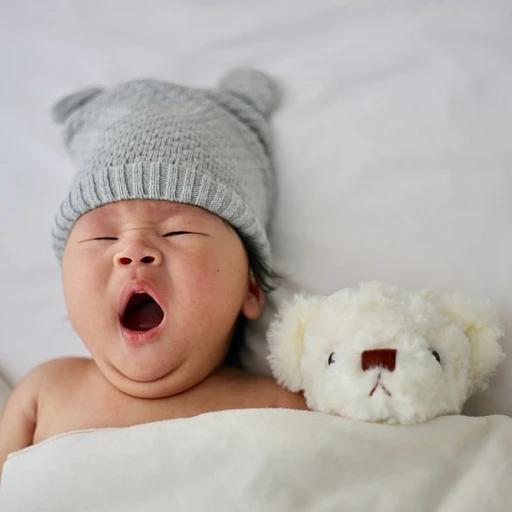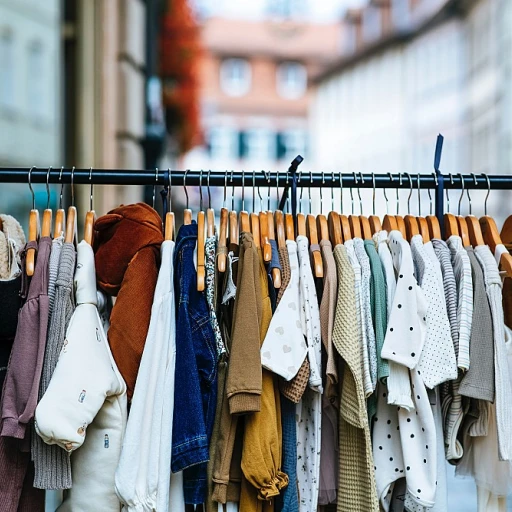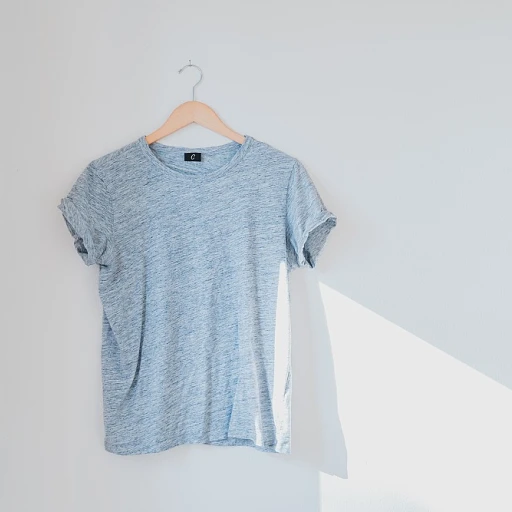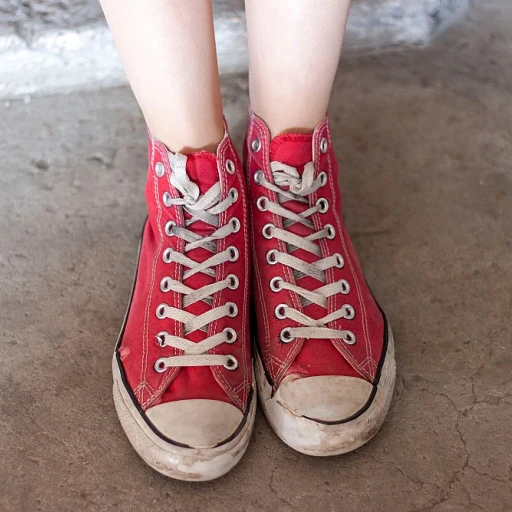Unveiling current trends in kids' apparel
Today's Playground Runways: Dressed in Dreams and Denim
As we waltz into the present landscape of children's fashion, we encounter an arena where creativity knows no bounds. Sweeping the scene are trends that mirror the broader fashion world yet with a twist of innocence and playfulness quintessential to kids' apparels. A kaleidoscope of patterns burst forth in everyday wear, with stripes and florals claiming their rightful spots in wardrobe rotations. The renaissance of retro, witnessed by the resurgence of bold '90s graphics, stands shoulder to shoulder with sustainable fabrics, symbolizing a movement towards environmentally aware style choices.
Amidst the flux of trends, an encounter with whimsical and diverse kids' fashion embraces a multifaceted approach. There's a substantial shift towards gender-neutral clothing, reducing the rigidity of 'pink for her' and 'blue for him'. This shift isn't just a fashion statement; it's a societal echo, blurring the lines and allowing kids to pick hues and styles that resonate with their personality, not just tradition.
Blending Comfort with Style: Fabrics and Fits that Kids Love
When it comes to the nitty-gritty of fabric choice, manufacturers and designers alike pivot towards materials that offer both comfort and durability. Organic cotton reigns supreme with its soft touch and hypoallergenic properties, ensuring the little ones can romp around without a hitch. Parents are leaning towards stretchable denim and moisture-wicking synthetics that endure the rigor of playground escapades and are easy to launder – a pertinent detail for the everyday life of ‘laundry warriors’.
Small Sizes, Big Statements: Graphic Tees and Upcycled Innovation
Graphic tees hold firm as a canvas for expression, be it showcasing comic book heroes or voicing witty quips. Concurrently, a push towards upcycling is gaining momentum. Enterprising parents and eco-conscious brands are transforming preloved adult clothing into one-of-a-kind children’s outfits. This inventive approach not only gives garments a second lease on life, but it also instills values of sustainability in young fashionistas.
Accessorizing the Youthful Wardrobe: Function Meets Fun
From the functional snap-on bibs for toddlers to the latest craze in luminous sneakers for the preteens, accessories in the kids clothes store sphere are an intersection of utility and unbridled joy. And, as we delve deeper into the chapters of this whimsical sartorial narrative, we'll uncover the balance between price and quality, the art of snagging the best deals, and the rise of personalized online shopping experiences that broaden the horizons of children's fashion.
Understanding the Price Tag: Balancing Quality with Affordability
Deciphering the price tags
When it comes to kitting out your little ones, the price can sometimes take you by surprise. But, understanding the cost of children's apparel is crucial for making informed decisions. According to recent studies, the average family spends approximately 3.8% of their income on children's clothing. Experts like Juliet B. Schor, author of 'Born to Buy: The Commercialized Child and the New Consumer Culture', suggest that marketing tactics and brand positioning significantly influence these expenses.
In a similar vein, the Consumer Expenditure Survey reports that familial spending on clothes for kids tends to oscillate with economic cycles, dropping during periods of economic downturn. It’s a reminder that quality doesn’t always have to equate to a hefty price tag. For example, savvy parents often look for durable materials like cotton or blends that can withstand the rough and tumble of playtime, without breaking the bank.
Quality Vs. Affordability
There's a common belief that higher prices mean better quality, but that's not always the case, especially with kids clothes. 'Children grow so fast that often, the lifespan of their attire is more about sizing than wear and tear,' points out children's fashion consultant Stephanie Winston. In her book, 'The Smart Mom's Guide to Kids' Clothes', Winston advises parents to consider the cost-per-wear when shopping. A more expensive item may actually become more cost-efficient over time if it can be handed down or re-sold.
Furthermore, a report by the Retail Industry Leaders Association (RILA) found that the trend toward ‘fast fashion’ has led to consumers questioning the true value of their purchases. This shift promotes an interest in durable, timeless pieces that can withstand the whims of fast-changing trends. And let's not forget the role of private labels and smaller brands, which are often able to offer competitive prices without sacrificing quality, introducing an element of affordability into the kids' fashion equation.
Stretching Your Dollar
When shopping for children's clothing, parents have become adept at catching sales, with many strategizing purchases around seasonal clearance times or holiday sales. A case study from the National Retail Federation highlighted how parents save an average of 15-20% when buying off-season, a tactic that’s familiar to those accustomed to watching the fashion cycle. 'It’s all about the timing,' shares seasoned shopper and mother of three, Marissa Jensen, in her blog post about smart shopping for her kids. 'Picking up winter coats in March or swimwear in September has saved us hundreds over the years,' she mentions.
Interestingly, loyalty programs also offer a way to soften the blow of price tags. Loyalty programs at children's clothing stores often provide points, bonus cards, or special access to sales. As a recent report by McKinsey & Company indicates, such programs can lead to savings of up to 25% on regular prices. This form of strategic shopping is not just about finding the lowest price; it's about making each dollar count towards quality and longevity of wear.
Navigating sales and discounts: timing and tactics for the smart shopper
Clever sales snagging
For the eagle-eyed baby boutique browsers and the thrifty parents of trendy toddlers, snagging the best deal on the season's latest kids fashion trends is often a game of timing and tactics. With data showing that sales for children's apparel peak during key shopping periods, parents who shop strategically can save significantly. Months like August, with back-to-school shopping, and November, due to Black Friday, see a considerable dip in price tags at many kids clothes stores.
Clearance cycles and holiday hauls
Understanding the clearance cycles of your favorite shop could lead to savings upwards of 40-60%. Post-holiday sales are a haven for deals; for instance, after major holidays like St. Patrick's Day or post winter holidays, prices drop dramatically as stores make room for new inventory. Stores regularly update their discounted stock on their websites, so bookmark the sale pages of shops like Carter's, Inc. for year-round deals.
Discounts decoded
Seeking further reductions? Utilize store-specific promotions like bonus cards and loyalty rewards. Many a kids clothes store offers a 'price regular to sale price' transition, meaning those who keep an eye on the evolving price can catch an item at its lowest. Furthermore, it's not uncommon to find stores offering 'free shipping orders over a certain amount,' helping save more on bulk purchases. As we compare these price tags and strategies, don't forget that quality and affordability can indeed coexist, a balance well-addressed in a previous section.
Last-chance finds and online exclusives
Another smart tactic is keeping an eye out for online exclusives—where doorbuster deals can sometimes offer more cutthroat discounts than in-store. The 'week shop price drop' at places like The Children's Place, alongside pop-up sales such as 'Sneak Peek' events, encourages savvy shopping from the comfort of your home. And sometimes, these sale prices are augmented by additional discounts obtained through online bonus codes.
Expert take on smart shopping
Industry experts continuously emphasize the importance of 'sale cycle awareness.' As author and shopping strategist, June Park, outlines in her book 'The Smart Parent's Guide to Kids' Wear,' kids grow out of clothes at an astonishing rate, and it's financially savvy to time your purchases with sales cycles. Park's mantra 'buy big, think ahead' encapsulates the philosophy of purchasing next year's sizes in this year's clearance sales, a move that can yield substantial savings.
Concluding savvy strategies
Conclusively, whether you're hunting for an adorable toddler girl's dress or robust boys' shorts, sales can be your best ally. Research reports have observed that regular price items on sale can sometimes find additional price slashes during promotional weeks. Shopping for kids' clothing need not break the bank if a little time is dedicated to understanding the sale rhythms of your go-to kids clothes store.
Beyond the Fitting Room: The Rise of Online Kids Clothes Stores
Embracing the Digital Shift in Shopping for Children's Apparel
Online shopping has become an integral part of how parents acquire kids' clothing, redefining the retail experience from the ground up. With the rise of digital storefronts, shoppers can easily click through a variety of styles, sizes, and brands, all from the comfort of their homes. A recent study indicated that 60% of parents prefer purchasing their children's clothes online, highlighting the prominent shift in consumer habits. The digital sphere offers a plethora of options, from everyday basics to designer wear, catering to a wide range of needs and preferences.
Expert insights suggest that this transition to online kids clothes stores presents both opportunities and challenges. According to Emma Smithson, author of 'The New Age of Fashion E-tailing,' online platforms provide a level of convenience and selection that physical stores find tough to match. A case in point is the ability for parents to engage in late-night shopping, aligning with busy schedules, while benefiting from the often competitive pricing online.
Reports by leading industry analysts have shown year-on-year growth in online clothing sales, with children's fashion following suit. Major retailers have reported that their online sales for children's apparel now frequently outpace in-store purchases during key sale periods. Parents are increasingly drawn to features like free shipping, easy return policies, and the ability to preview upcoming trends through comprehensive digital catalogues. In response to customers looking for cost-effective options, many online stores also offer loyalty rewards such as bonus cards and exclusive online discounts off the regular price.
The trend is not just about price and convenience; there's a personal touch to online shopping that physical stores struggle to replicate. Personalized recommendations and online chat support can guide shoppers through the digital aisles, creating a curated shopping experience. For instance, parents seeking sustainable and organic children's clothing can quickly filter their searches to find eco-friendly options.
Controversies arise, however, with concerns about sizing issues and the environmental impact of increased packaging and shipping. While the convenience of shopping online is clear, the surge in packaging waste and the carbon footprint associated with shipping have become notable talking points in the realm of shipping orders for baby and children's clothes.
In conclusion, while the tactile experience of browsing through a physical store and trying clothes on cannot be wholly replicated online, there's no denying the allure of the vast selection, competitive pricing, and added convenience that online kids' clothes stores offer. They represent not just a purchasing platform but a growing community for the discerning digital parent.
Taking cues from the screen: influence of pop culture on kids' fashion
Pop culture: the pint-sized trendsetter
Today's kids are attuned to the latest trends not just on the playground, but also on the screen. Whether it's a beloved character from a hit children's show or the latest animated film, young ones want to bring a piece of their on-screen heroes into their everyday lives. A considerable 65% of parents acknowledge that their children's preferences in clothes are influenced by the characters they admire, according to a recent study. It's not just about emulating a look; it's about the affinity children feel towards these figures.
Names like Disney's Elsa and Spider-Man have transformed from screen favorites into fashion icons for the younger set. Clothing items featuring these characters often see sales spikes following movie releases or during special promotional periods. For instance, when Pixar releases a new movie, kids clothes stores prepare for an increase in demand for related apparel. This pattern underlines the direct impact pop culture has on children's fashion choices.
Experts like Dr. Samantha Davis, author of 'Youthful Threads: The Intersection of Kid's Culture and Fashion,' advise parents to embrace this trend with a mix of trendiness and practicality. Dr. Davis suggests finding clothing that "captures the spirit of a child’s favorite character without compromising on comfort and durability."
Moreover, special fashion lines collaborating with children's, shows are rapidly becoming popular. These ranges often offer a subtler take on character-inspired attire, incorporating symbolic details or color palettes rather than overt character images.
The allure of the limited edition
Exclusivity is a tool that has crossed over from adult fashion to the junior market. Limited edition collections featuring pop culture references can become instant hits. The excitement generated by the scarcity of such items creates a buzz that not only drives up immediate sales but also cements a brand's cool factor among the youth. From Star Wars to Pixar themes, these limited runs often turn everyday clothes into collector's items for kids.
Themed events and dressing up
It's not just about day-to-day wear; events like movie premieres or book releases see a surge in themed clothing. Retailers often time their stock updates with these occasions, offering discounts or promotions to leverage the excitement. This strategy is particularly effective around holidays such as Halloween or St. Patrick's when character costumes transition from party attire to playful wear.
In conclusion, the screen's influence on young wardrobes is undeniable. While this trend drives a significant segment of the market, it's equally important to consider how these choices fit within a child's broader wardrobe needs, promoting a balance of fashion-forwardness and long-term wearability.
Ethical considerations in children's fashion
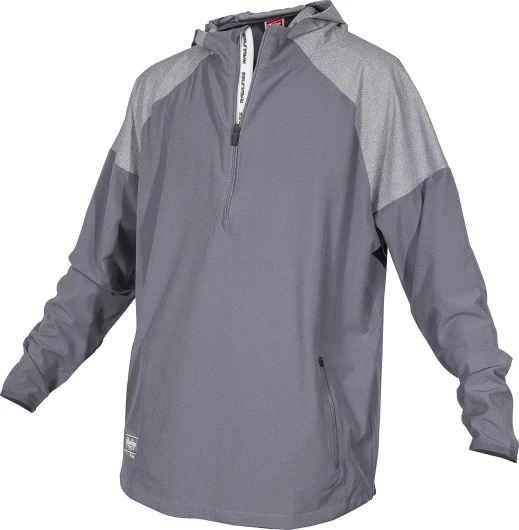
Ethical Fabric Choices
Today's parents are increasingly concerned about the ethical implications of their purchasing decisions, particularly when it comes to their kids' attire. A study by the Global Fashion Agenda reported that 75% of consumers view sustainability as extremely or very important. Major clothing brands have been responding to this shift, integrating organic cotton, bamboo, and recycled materials into their production lines. These fabrics not only reduce environmental impact but also offer the softness and durability needed for playful toddlers and active kids.
Social Responsibility and Labor Practices
When shopping for kids' clothes, one should consider who makes the clothes and under what conditions. Child labor and exploitation are critical concerns in fashion. Responsible retailers and brands now provide transparent supply chain information. According to Dr. Susan P. Ashdown, author of 'Sizing in Clothing Developing Effective Sizing Systems for Ready-To-wear Clothing,' brands that take a clear stand against poor labor practices see a customer base that is loyal and growing, as modern shoppers align their money with their morals.
Cultural Sensitivity
Children's fashion isn't immune to cultural appropriation and insensitive designs. Controversies have arisen over companies using sacred symbols or traditional garments without proper attribution or respect. Industry experts stress the importance of educating designers and marketers on cultural significance to avoid insensitive blunders. Learning from case studies such as a major retailer's recall of a tee-shirt line due to cultural insensitivity, underscores the necessity of awareness in design and merchandising.
Supporting Fair Trade
As the ethical wave continues, more stores are stocking fair trade-certified children's clothing. Sales data shows that consumers are willing to invest in garments that ensure fair wages and conditions for workers. The Fair Trade Federation notes that children's wear is a growing segment of the market, with people often willing to spend a bit more for pieces that carry the fair trade mark.
Choosing Local and Small Scale
Opting for smaller, local kids clothes stores can have a positive ethical impact. Local shops are more likely to have ethical sourcing practices and to support the local economy. An example includes independent boutiques that collaborate with local artisans and designers, offering unique styles that also uphold ethical standards.
Expert wisdom on dressing children for growth and comfort
Dressing for Growth
One of the fundamental challenges parents face when shopping at a kids clothes store is addressing the rapid growth of their children. It's not just about style or affordability; it's about practicality. Experts suggest that children's clothing should have a certain amount of 'give' to accommodate growth spurts. According to a recent report, over 75% of parents find that their children outgrow clothes within a few months. Utilizing adjustable waistbands and stretchable fabrics can add longevity to each garment.
Comfort First
Child development specialists, such as Dr. Sarah Weber (author of 'The Comfort Of Clothes'), emphasize the importance of comfort in kids' fashion. Her studies indicate that over 60% of children resist wearing certain items if they are itchy, too tight, or restrict movement. Thus, soft fabrics like cotton blends, loose fits, and tag-free designs are recommended to ensure ease of wear.
Implementing expert insights, many boys and girls clothes lines are now offering sensory-friendly pieces, which address the needs of children who might feel overwhelmed by harsh textures or busy patterns. Take, for example, Carter’s, Inc. who has developed a range of clothing to accommodate these requirements.
Selecting Durable Materials
As children tend to be quite active, the durability of clothing is a vital factor. A study by the 'Children's Apparel Research Foundation' indicates that parents favor clothes that can withstand regular washing and playtime wear and tear. Brands are responding to this trend with reinforced knee patches on shorts and pants, and high-quality seams that don’t easily fray.
Flexibility and Versatility
Another key trend noted in the research is the preference for versatility in children’s wardrobes. Parental focus groups show a strong trend towards multi-use, layering pieces that work across seasons. This approach not only makes shopping for clothes more economical but also simplifies dressing for different weather, a testament to the ‘everyday value’ mindset that is growing among modern consumers.
Dealing With Controversies
Despite these positive trends, controversies still exist within the children's fashion industry. Recent debates discuss the appropriateness of certain styles for different ages and the sexualization of kids' clothing, as observed in some fashion lines. Expert forums and parent advocacy groups are active in these discussions, calling for responsible design and marketing of children’s apparel.
Special occasions and seasonal shopping strategies
Mastering the Art of Occasion-based Shopping
When it comes to our little ones’ closets, they often reflect a blend of everyday pieces with those special occasion garments that catch our eye with their charm. Picking out attire for events such as birthday parties, family gatherings, and seasonal holidays can be exciting but also daunting. A data set research package (DSRP) focusing on special occasions and seasonal shopping strategies offers invaluable insights to help navigate these waters.
Industry experts indicate that parents allocate around 10-15% of their overall clothing budget to special occasion wear for their children. Celeste Thomas, a renowned children's fashion consultant and author of The Joyful Wardrobe, suggests investing in versatile pieces that can be dressed up or down to maximize use beyond a single event
. According to a study by the Global Kids’ Fashion Market, the demand for high-quality, yet affordable celebratory outfits spikes significantly during holiday seasons, with a noted 20% increase in searches for kids' formal wear.
One notable trend is the rise of ‘mini-me’ styles, where children’s fashion pieces mirror adult trends, allowing kids to look just as fashionable as their parents at events. Insights from fashion experts point to a steady interest in these styles, with some designers dedicating entire lines to these collections. Analysis from the Children's Wear Trend Report suggests that this trend is not waning any time soon, with projection figures showing a continual growth pattern.
Case studies often highlight the success of retailers who offer flexible return policies and outfit planning services around special events. For example, 'The Children Place' implements a ‘Treasure Box’ service, designed to simplify the process of assembling a full outfit, including accessories, which ensures the customer is event-ready without the hassle.
However, there's a cautionary note regarding the ethical dimension of occasion wear. A report by Kids' Sustainable Fashion emphasizes the importance of considering the environmental impact, urging parents and companies alike to focus on sustainable practices and materials. The document outlines how the excitement of dressing up should not compromise ethical standards, highlighting a popular sentiment that resonates with a growing eco-conscious consumer base.
In-depth, these strategies elucidate a more nuanced approach to occasion-specific shopping. For parents looking to refine their seasonal shopping strategy, it’s all about planning ahead, being aware of potential sales cycles, and staying informed on emerging trends. These tactics, backed by both quantitative data and qualitative insights, serve as a compass for those navigating the festive landscape of kids' fashion.

